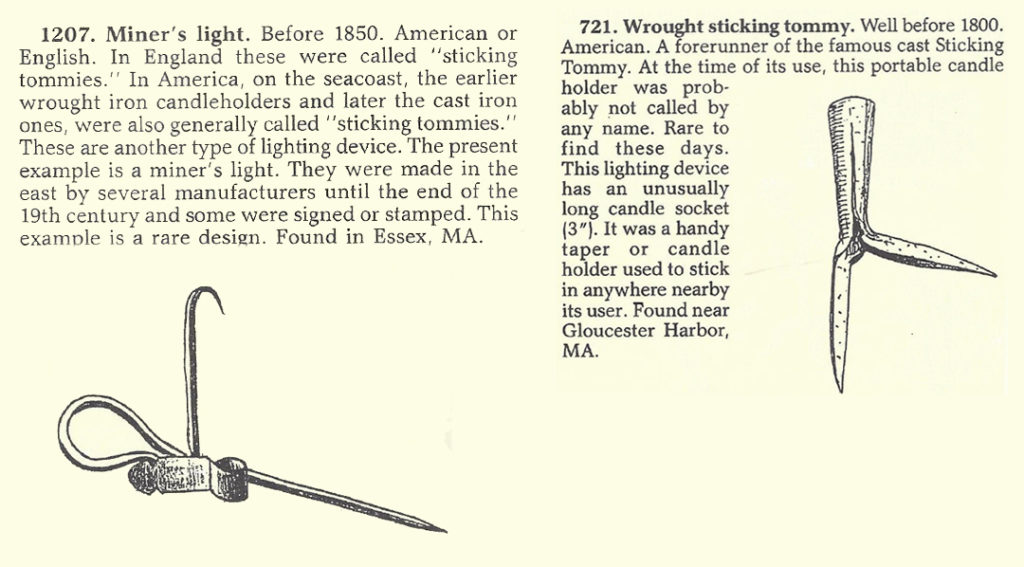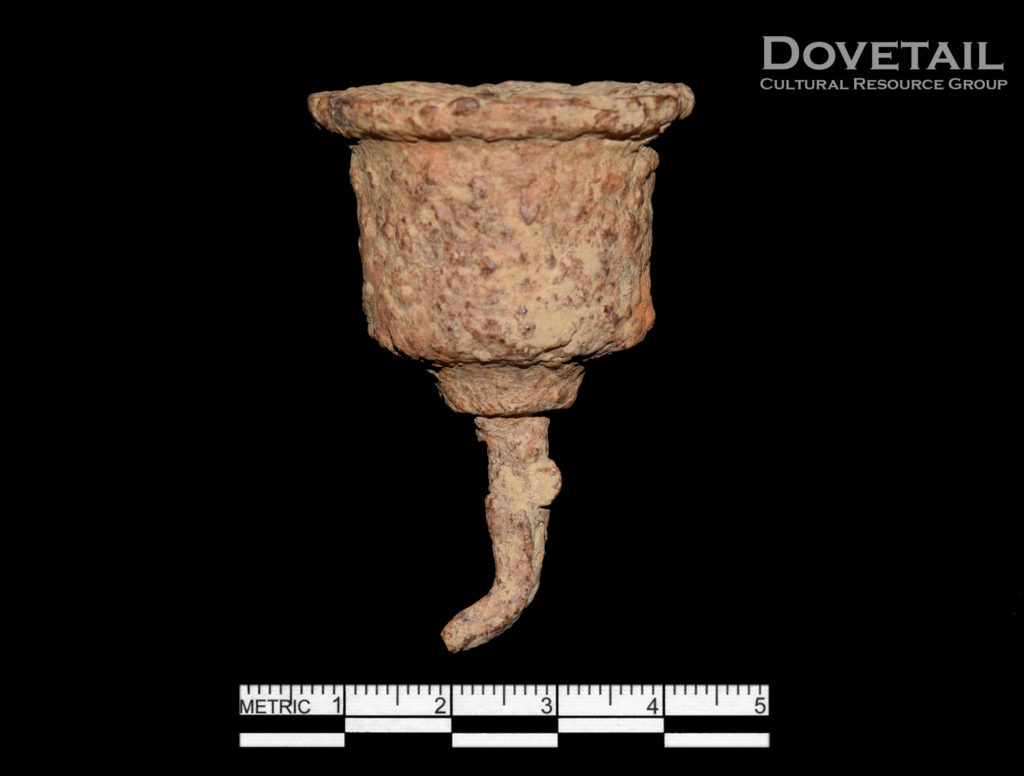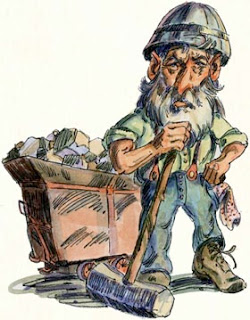By D. Brad Hatch
This month’s post highlights an object recovered from a Civil War battlefield and campsite in Virginia. Rather than being associated with fighting, however, this object speaks to the daily lives of soldiers during the war. The object is a cast iron candle holder with a short spike extending from its base (Photo 1). Known as a “sticking tommy” this candle holder could be used in a variety of settings by pounding the spike into any soft material, creating a makeshift candlestick wherever extra light might be needed. While the “sticking” part of the name is fairly obvious based on the object’s function, the “tommy” part is less clear. The word “tommy” may be related in some way to “tommyknockers” who were mythical Welsh creatures similar to leprechauns who wore miner’s outfits and were known as mischief makers among miners (Figure 1). A variation of the “sticking tommy” related to mining was particularly popular in the middle of the nineteenth century, perhaps leading to the colloquial name of this device. Unlike the Civil War example, miner’s candle holders had long, horizontal spikes that allowed the candle to sit out further from the wall in addition to sometimes having hooks that would allow the candle to be suspended (Figure 2).
Published material discussing the history of this type of candle holder is generally scarce, likely due to their plain and utilitarian nature. However, similar wrought iron examples pre-dating the nineteenth century extend far back in history for as long as iron working and a need for portable lighting were aligned (see Figure 2). Clearly, we can only speculate what the soldier who owned this “sticking tommy” used its light for. However, some of the common evening activities requiring candlelight would have included reading, writing letters, sewing, routine equipment maintenance, and other leisure activities, such as whittling. Rather than gathering around a larger campfire, the “sticking tommy” would have allowed soldiers a more private and individual space in which to work, perhaps underscoring the personal nature of the activities that may have been associated with its use. Additionally, it could have provided needed light in smaller quantities, making it more difficult for enemy troops to ascertain positions and troop strength through campfires. Ultimately, this small object helps to illuminate the more mundane and routine aspects of life for soldiers during the Civil War that occupied the majority of their time.

Figure 2: On Left : Wrought Iron “Sticking Tommy” Likely Dating to the Eighteenth Century. On right: “Sticking Tommy” of the Type Typically Used in Mining (Barnes 1988:126).
References
Barnes, Frank T.
1988 Hooks, Rings & Other Things: An Illustrated Index of New England Iron, 1660-1860. The Christopher Publishing House, Hanover, Massachusetts.
Outta The Way!
2020 The Tommyknockers. Electronic document, https://outtaway.blogspot.com/2011/10/tommyknockers.html, accessed January 2020.


